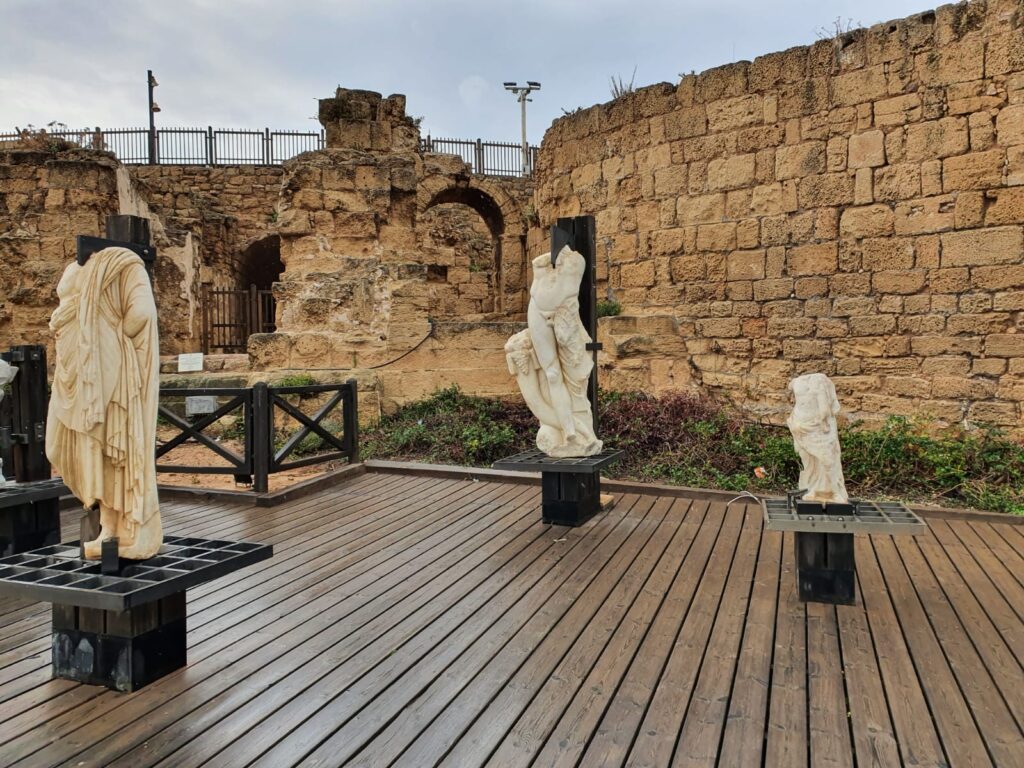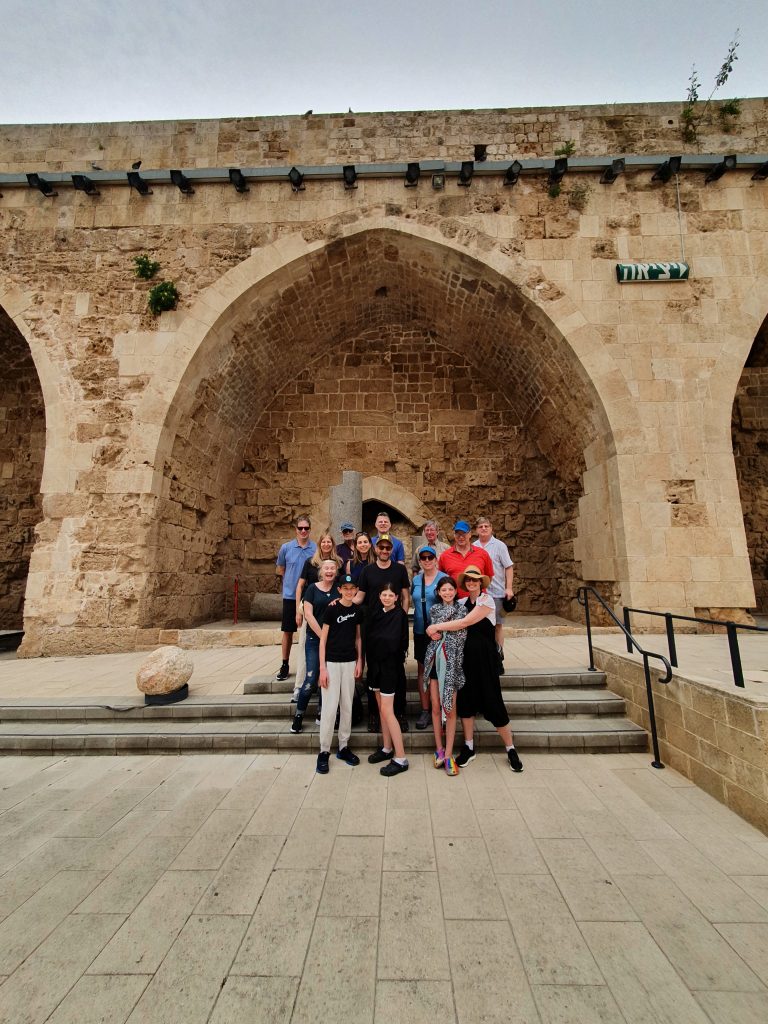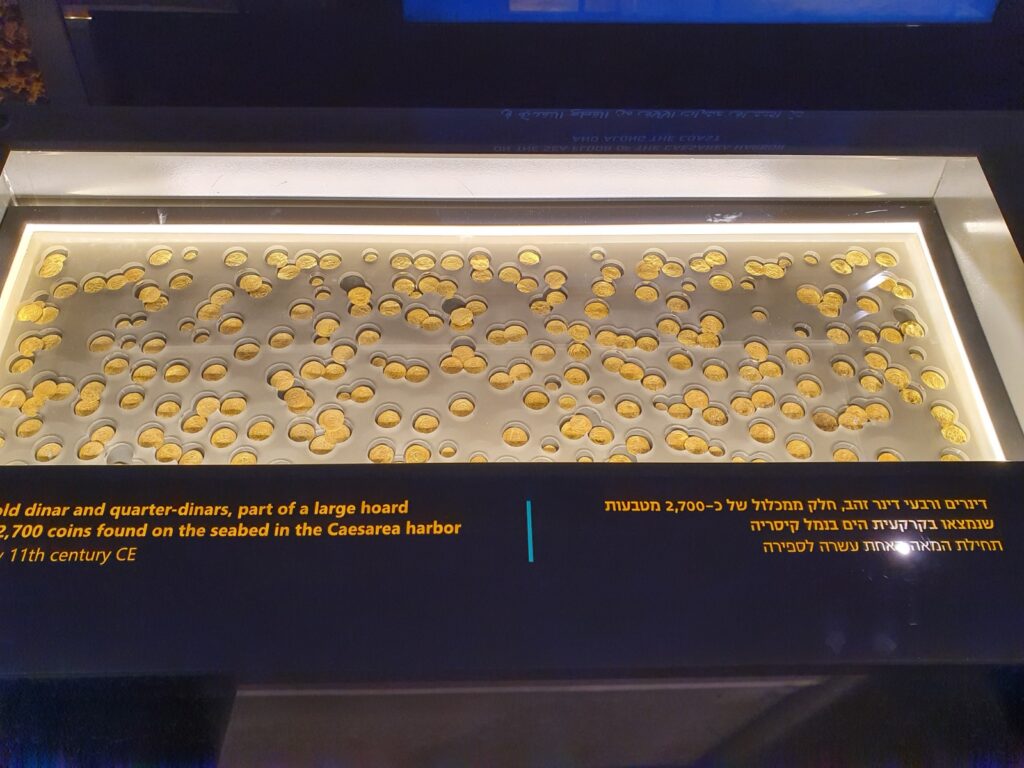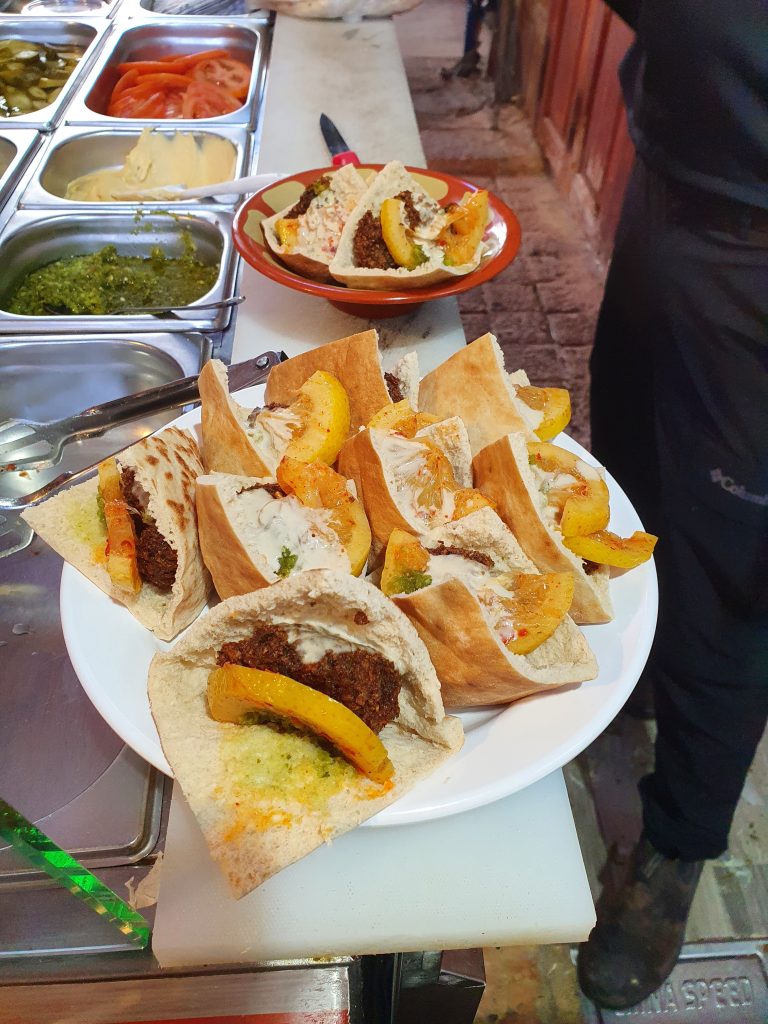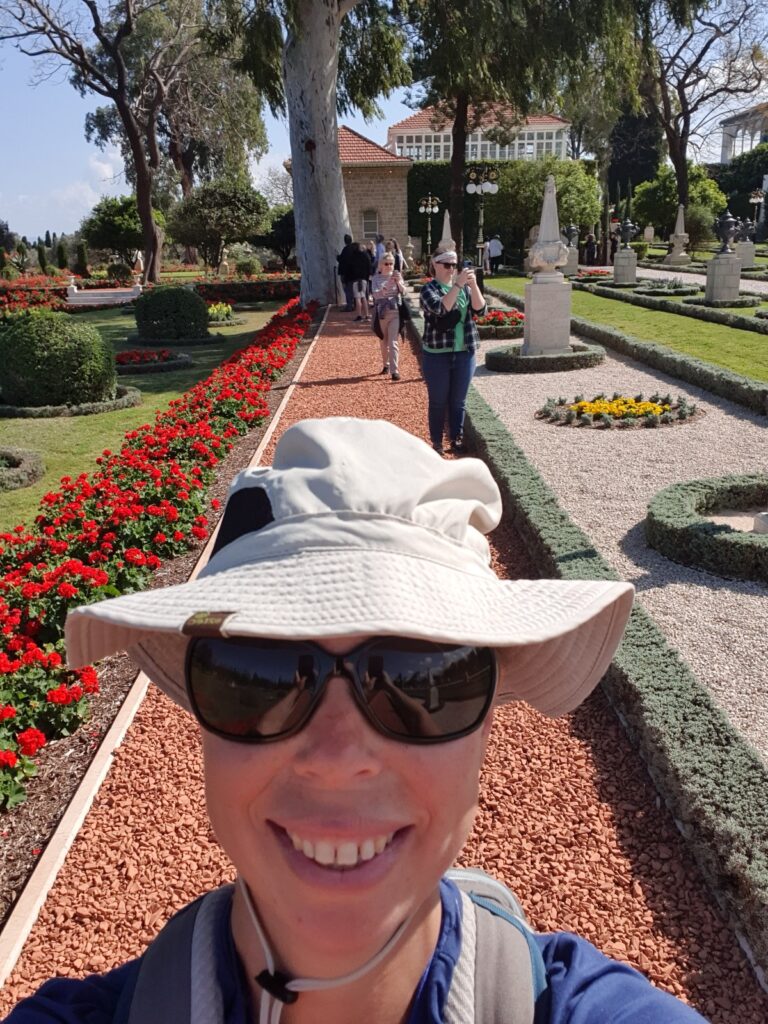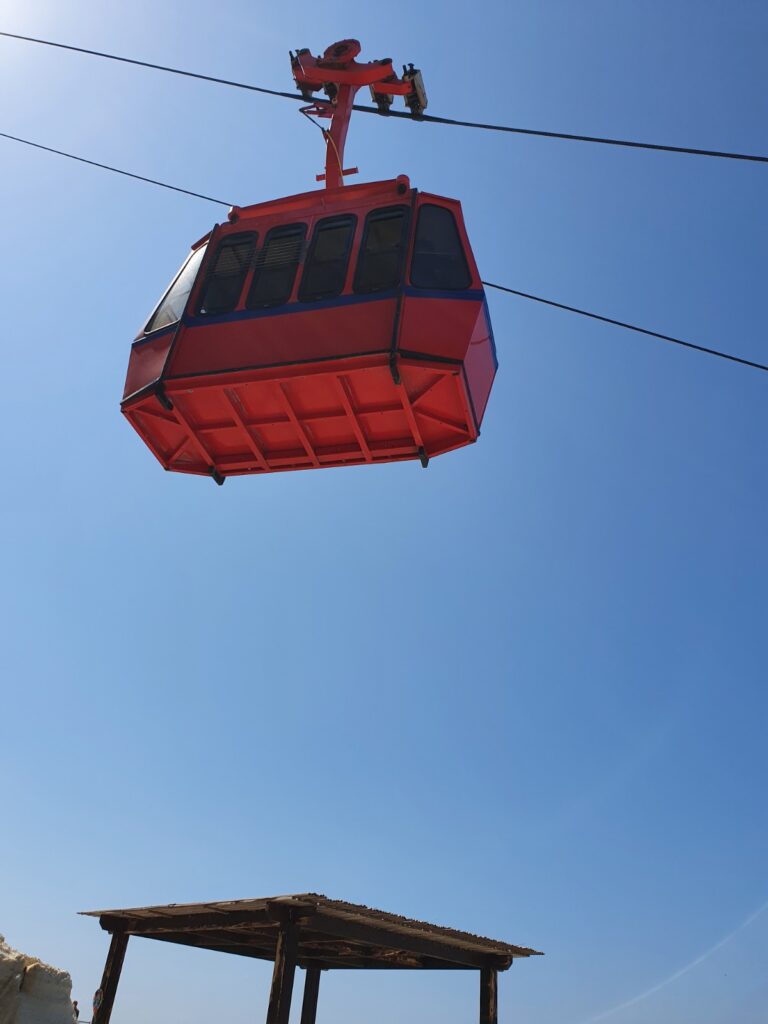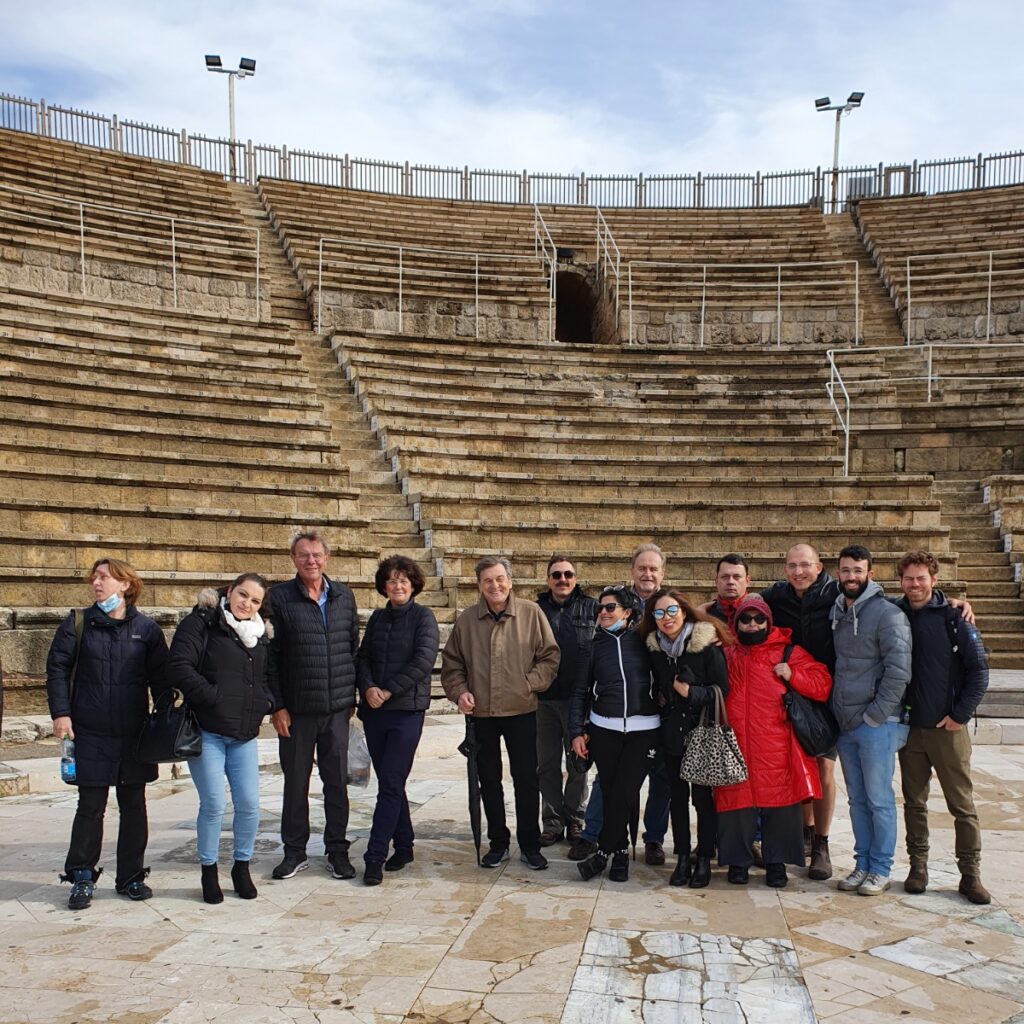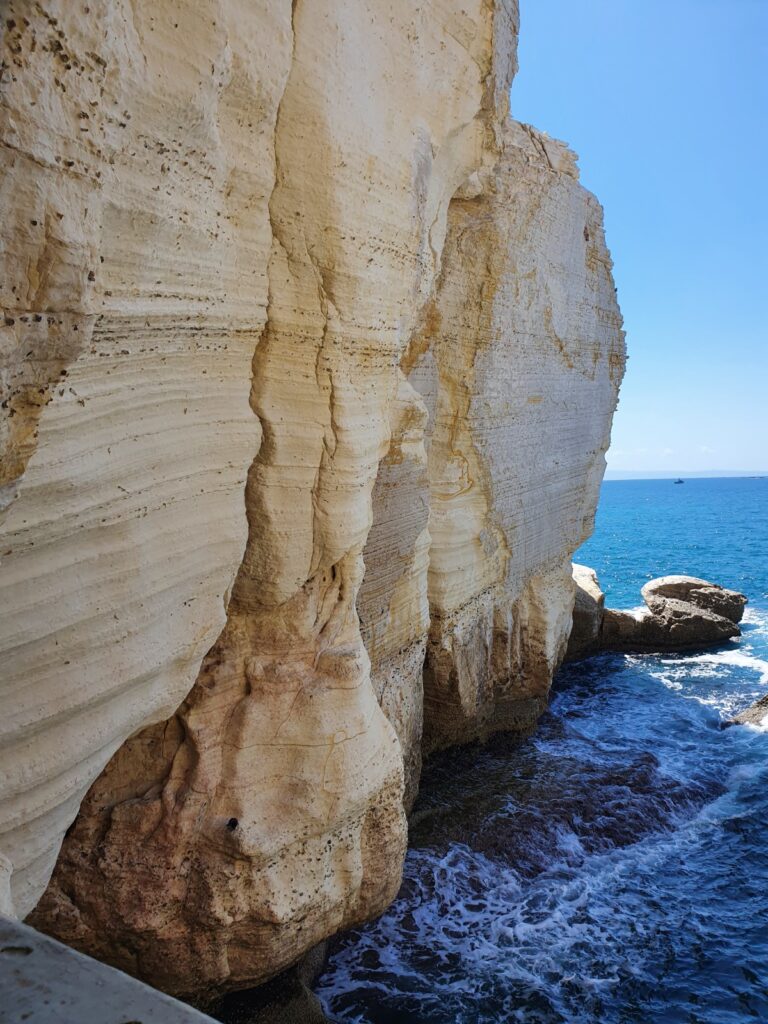גילי דרור Gily Dror » Day Tour in Israel – Caesarea, Acre And Rosh Hanikra Tour
Day Tour in Israel – Caesarea, Acre And Rosh Hanikra Tour
Caesarea National Park
We’re exploring the ancient ruins of Caesarea, walking through Herod’s grand port city. The Roman theater stands tall, the hippodrome echoes with past chariot races, and the Crusader fortress overlooks the sea. History comes alive with every step!
The Old City of Acre
The Old City of Acre (Akko) is a fascinating UNESCO World Heritage site on Israel’s northern coast, offering a unique glimpse into centuries of history. One of the most remarkable periods in Acre’s past is the Crusader era. In the 12th and 13th centuries, the city served as a major stronghold for the Crusaders, particularly the Knights Hospitaller, who built impressive halls, underground tunnels, and fortified structures that still stand today. Visitors can walk through vast stone chambers and secret passageways that once served as hospitals, dining halls, and military quarters.
Acre is also rich in Ottoman heritage, featuring architecture from the 18th and 19th centuries, including the majestic Al-Jazzar Mosque, a Turkish bathhouse (hammam), and an ancient khan (caravanserai). The city’s colorful markets, old port, and coastal views add to its charm, making it a captivating place where East meets West, and ancient meets modern.
Whether you’re interested in Crusader knights, Middle Eastern architecture, or just want to stroll through atmospheric alleys, Acre offers a deep and unforgettable experience.
Archaeological remains and a gold treasure in Caesarea
In Caesarea, archaeologists have uncovered impressive ancient remains, including Roman, Byzantine, and Crusader structures. One of the most remarkable discoveries is a treasure of gold coins from the Islamic period, hidden for centuries, offering a glimpse into the city’s diverse and dynamic history.
Acre Market – Flavors and Colors of the Old City
The market in the Old City of Acre is a vibrant blend of sights, sounds, and scents. Winding through narrow stone alleys, you’ll find stalls bursting with spices, fresh produce, sweets, and traditional baked goods. Local vendors offer everything from Arabic coffee and fresh fish to handmade pastries and Middle Eastern street food like falafel, hummus, and shawarma.
Don’t miss tasting knafeh, malabi, or Acre’s famous hummus at one of the legendary local spots. The market is more than a place to shop—it’s a true cultural experience that reflects the rich culinary heritage of the city and its mix of Arab, Ottoman, and Mediterranean influences.
The Templar Tunnel – Acre
The Templar Tunnel in Acre is an underground passage built by the Knights Templar in the 12th century.
It connected their fortress in the west of the city to the port in the east, allowing safe and strategic movement.
Discovered in 1994, the tunnel is now open to visitors and offers a fascinating glimpse into Crusader-era Acre.
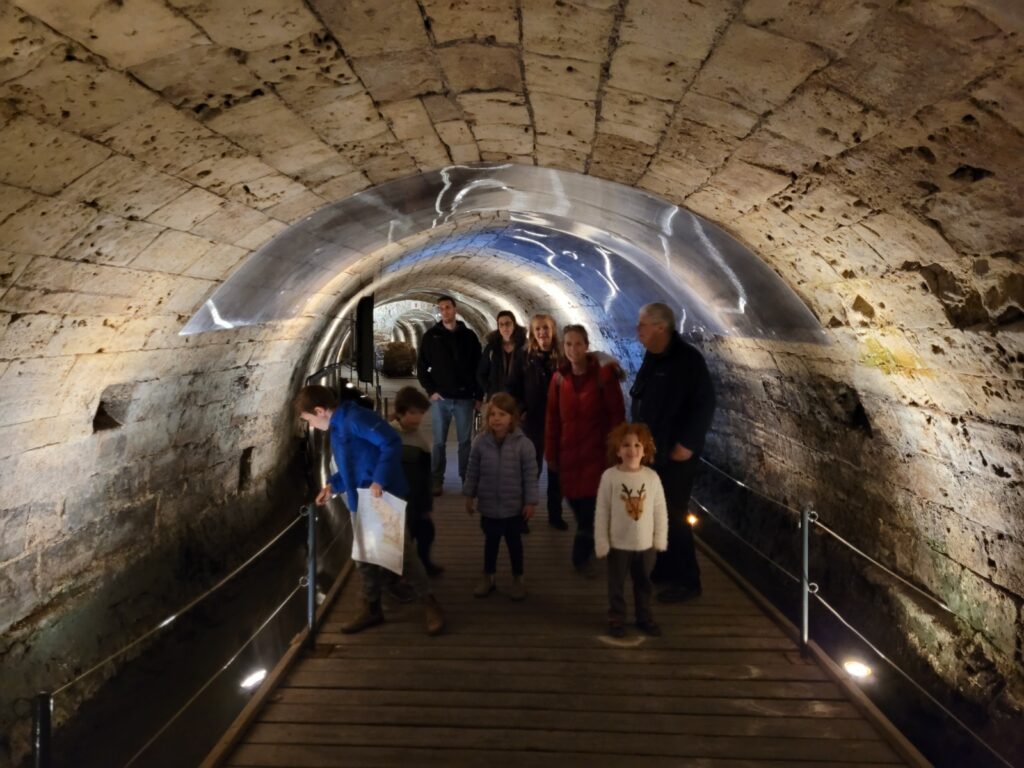
The Bahá’í Gardens – Acre
The Bahá’í Gardens in Acre surround the shrine of Bahá’u’lláh, the founder of the Bahá’í Faith.
Peaceful and beautifully maintained, the gardens are a sacred site and a symbol of harmony, open to all visitors.
They offer a serene experience and stunning views of the Western Galilee.
Rosh Hanikra Grottoes – Nature’s Masterpiece on the Sea
At the northern tip of Israel’s Mediterranean coast, the Rosh Hanikra grottoes are a stunning natural wonder. Formed over thousands of years by the force of the sea crashing into the white chalk cliffs, these sea caves create a magical network of tunnels and chambers filled with turquoise water and echoing waves.
Visitors reach the grottoes via one of the steepest cable cars in the world, offering breathtaking views of the coastline. Inside, walkways lead you through the illuminated caves, where nature, sea, and rock meet in a dramatic and unforgettable setting.o
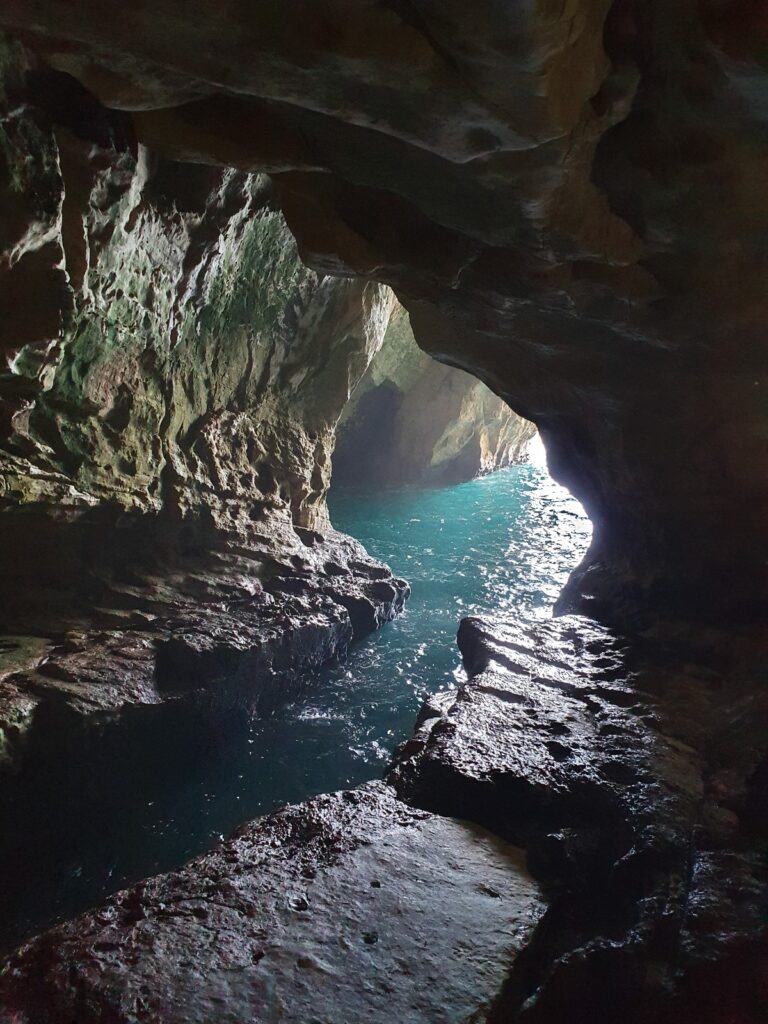
Rosh Hanikra Cable Car
The cable car at Rosh Hanikra is the steepest in Israel, taking visitors down the cliffside to the stunning sea grottoes.
The short ride offers breathtaking views of the Mediterranean and the dramatic white cliffs – a perfect start to an unforgettable visit.
Herod and Caesarea
King Herod the Great built Caesarea in the 1st century BCE as a magnificent port city dedicated to Caesar Augustus.
Known for his grand architectural projects and political ties to Rome, Herod was also connected to the local Jewish dynasty – he married Mariamne, a Hasmonean princess.
His reign blended Roman power with local politics, and Caesarea became one of the most impressive cities in the region, reflecting both ambition and strategy.
Rosh Hanikra National Park – Nature, History, and Wonder
Located at Israel’s northernmost coastline, Rosh Hanikra is a breathtaking natural site where sea and cliffs meet in spectacular harmony.
Take a cable car down to explore the white chalk grottoes, carved by the waves over thousands of years. Walk through illuminated tunnels, hear the crashing surf echo inside the caves, and enjoy stunning views of the Mediterranean Sea.
Beyond the natural beauty, Rosh Hanikra also holds historical significance – with remnants of the old British railway tunnel connecting Israel and Lebanon during the Mandate period.
It’s a perfect stop for nature lovers, photographers, and anyone looking to enjoy a unique blend of geology, sea views, and history.
Frequently Asked Questions
Is Caesarea worth visiting?
Caesarea is definitely worth visiting! It’s a unique blend of ancient history, stunning coastal views, and impressive archaeological sites. You can explore the remains of a Roman theater, the ancient port built by King Herod, a Crusader fortress, and beautiful mosaics. The mix of history, culture, and natural beauty makes it a fascinating destination for history buffs and casual travelers alike.
What is there to do in Caesarea?
n Caesarea, there’s plenty to explore and enjoy:
Roman Theater: Visit the well-preserved theater where performances still take place today.
Herod’s Ancient Port: Explore the remains of the grand port built by King Herod, once a bustling trade hub.
Crusader Fortress: Wander through the ruins of a medieval fortress with stunning views of the Mediterranean.
Byzantine Baths and Mosaics: Discover beautifully detailed mosaics, including the famous Birds Mosaic, and ancient bathhouses.
Hippodrome: Walk along the remains of the chariot racing arena.
Caesarea National Park: Enjoy the open-air museum with scenic views of the sea and many other historical ruins.
Why was Caesarea Maritima built?
Caesarea Maritima was built by King Herod the Great around 22-10 BCE as a grand port city and a center of trade and commerce. Herod wanted to establish a thriving harbor on the Mediterranean Sea, as the region lacked a natural deep-water port. The city was designed to be an impressive and strategically important hub, serving as a vital link for trade between Rome and the Eastern Mediterranean. It was also intended to solidify Herod’s political power by creating a magnificent city that honored the Roman Emperor Augustus, after whom it was named, and by showcasing his architectural and engineering abilities. Over time, Caesarea grew into a major city of the Roman Empire, with a diverse population and important religious, administrative, and military roles.
Is Rosh Hanikra worth visiting?
Yes, Rosh Hanikra is definitely worth visiting—especially if you enjoy natural beauty, scenic views, and unique experiences. The grottoes carved by the sea into white limestone cliffs are stunning, and the short cable car ride down the cliff is an adventure in itself.
You’ll enjoy:
-
Beautiful views of the Mediterranean coastline
-
A walk through dramatic sea caves with turquoise water
-
Historical interest, including a British-era railway tunnel
It’s a great stop on a northern Israel day trip, especially when combined with places like Acre or Caesarea.
What is the history of Rosh Hanikra?
Rosh Hanikra, located on Israel’s northern Mediterranean coast near the Lebanese border, has a rich history shaped by both nature and human activity.
For thousands of years, the grottoes were formed naturally by the force of waves carving tunnels into the white chalk cliffs. The site was known in ancient times as a coastal passageway, used by merchants, armies, and travelers moving between Egypt, Phoenicia, and Mesopotamia.
During World War II, the British built a railway tunnel through Rosh Hanikra as part of a rail line connecting Haifa to Beirut and Tripoli, facilitating military transport. However, in 1948, during Israel’s War of Independence, the tunnels were blown up by the Haganah (Jewish underground forces) to prevent enemy forces from using the railway to invade Israel from Lebanon.
Today, Rosh Hanikra is a natural and historical attraction, famous for its breathtaking grottoes, unique geography, and remains of the old railway. It’s a must-visit for nature lovers and history enthusiasts alike.
Is Akko worth visiting?
Yes, Akko (Acre) is absolutely worth visiting—it’s one of the most fascinating and historic cities in Israel. This coastal gem offers a rare blend of ancient history, vibrant culture, and authentic local life.
Why it’s worth your time:
-
Crusader History: Walk through underground halls, tunnels, and fortresses built by the Crusaders over 800 years ago.
-
UNESCO Old City: The Old City is beautifully preserved, with Ottoman-era buildings, mosques, and a bustling harbor.
-
Local Markets: Experience colorful markets filled with spices, sweets, fresh seafood, and traditional street food.
-
Cultural Mix: Akko reflects centuries of Jewish, Muslim, Christian, and Baháʼí heritage all in one place.
-
Sea Views: Enjoy stunning views of the Mediterranean from ancient city walls.
Whether you’re into history, food, culture, or just scenic beauty—Akko is a unique and unforgettable stop in
What is the history of the city of Acre?
The history of Acre (Akko) spans thousands of years, making it one of the most historically significant cities in Israel. Located on the Mediterranean coast, it has been a crossroads of cultures, religions, and empires. Here’s a brief overview of its history:
Ancient and Biblical Era
-
Early Settlements: Acre’s history dates back to ancient times, with evidence of settlements as far back as the Canaanite period (circa 2000 BCE). It was an important port city in ancient times.
-
Biblical References: Acre is mentioned in the Bible, and in the Book of Judges, it was one of the cities conquered by the Israelites. The city was strategically important due to its location along trade routes.
Crusader Period (12th-13th Century)
-
Crusader Stronghold: In 1104, Acre became the Crusader capital of the Kingdom of Jerusalem. The city flourished as a major port and military center during the Crusader era. It was known for its impressive Crusader fortifications, churches, and hospices.
-
Siege of Acre: The city was famously besieged in 1291 by the Mamluks (Muslim forces), marking the end of Crusader rule in the Holy Land.
Ottoman Period (16th-19th Century)
-
After the fall of the Crusaders, Acre came under Ottoman control in 1517 and became a provincial center. The Ottomans built many of the city’s key structures, including Al-Jazzar Mosque and the Ottoman walls, which are still visible today.
-
Al-Jazzar Pasha, an Ottoman governor, made significant contributions to the city’s development in the late 18th century.
Modern History (20th Century)
-
British Mandate: During the British Mandate in the early 20th century, Acre served as an administrative center and saw significant Jewish and Arab tensions.
-
Israeli Independence: In 1948, during the War of Independence, Acre was captured by Israeli forces. Many of its Arab residents fled, and the city became part of the newly established State of Israel.
Today
Acre is a UNESCO World Heritage site due to its well-preserved Old City and its importance in world history. The city is a melting pot of Jewish, Muslim, Christian, and Baháʼí heritage, with many significant religious and historical sites, including the Crusader City, Al-Jazzar Mosque, Baháʼí Gardens, and vibrant markets.
Acre’s rich history makes it one of Israel’s most fascinating destinations, offering a unique combination of ancient ruins, cultural diversity, and modern life.

